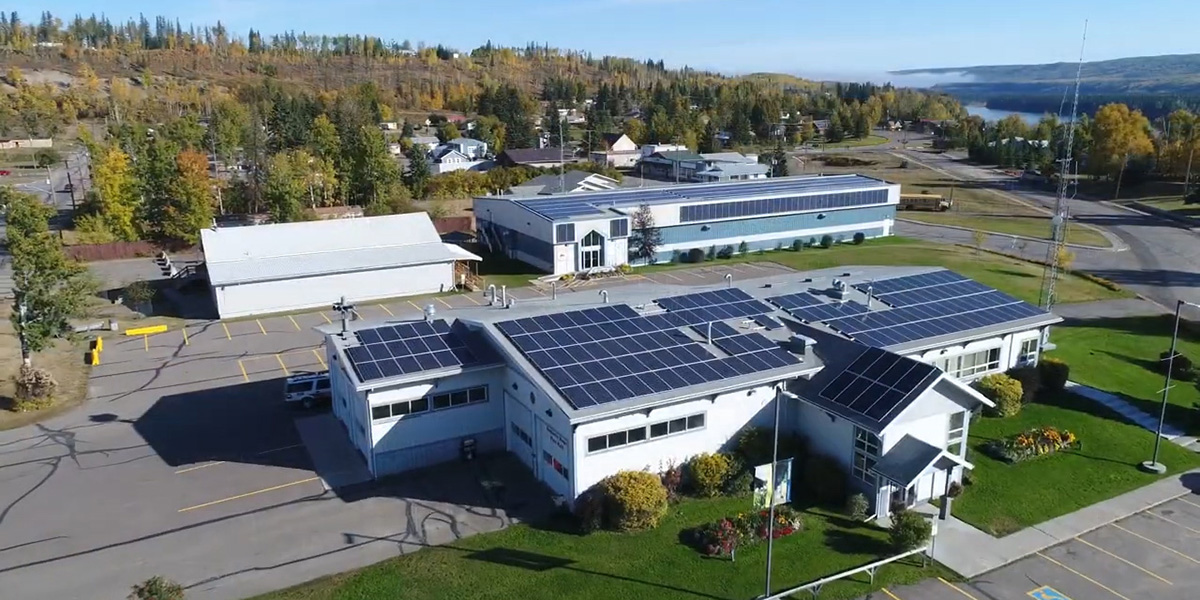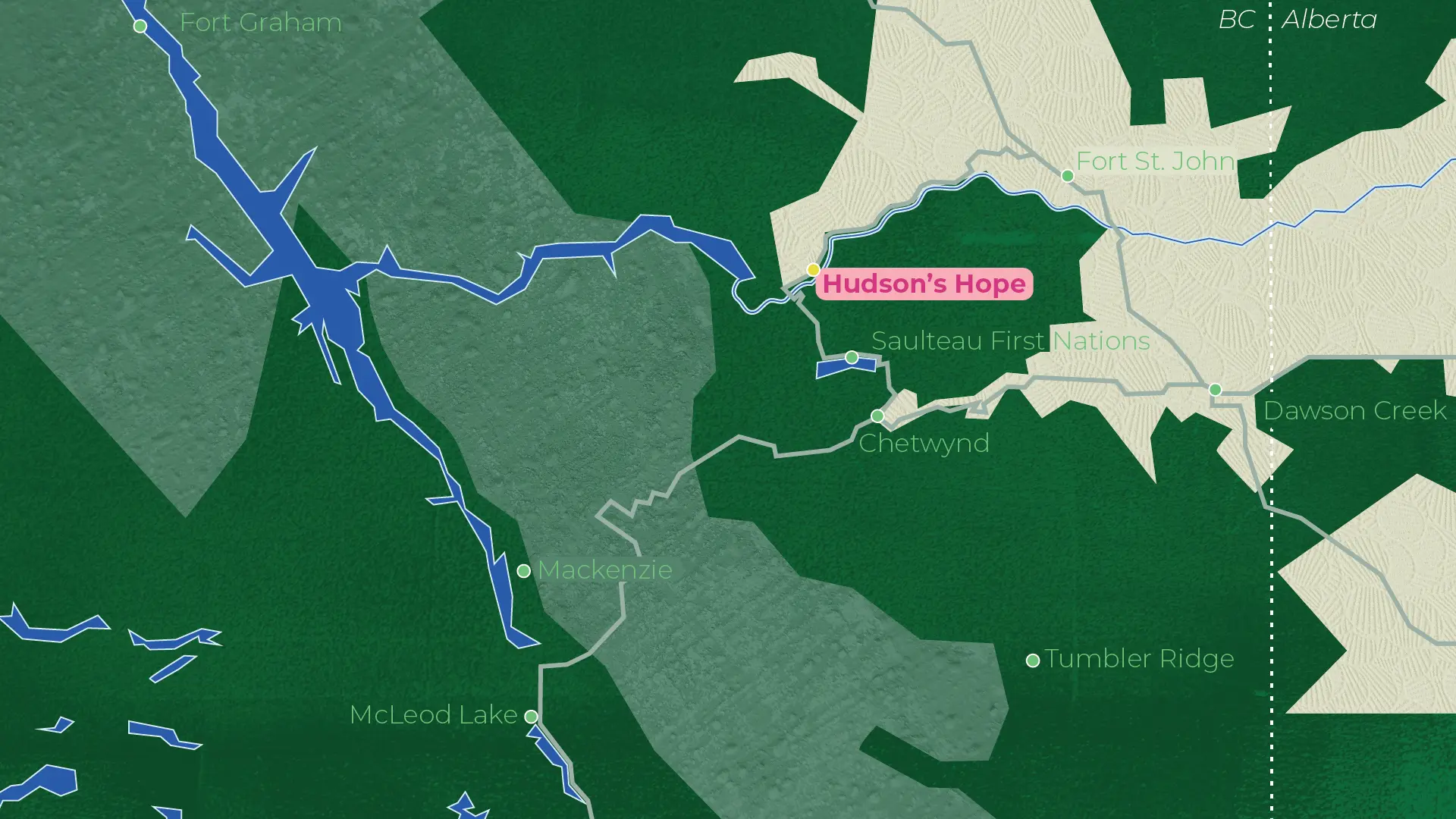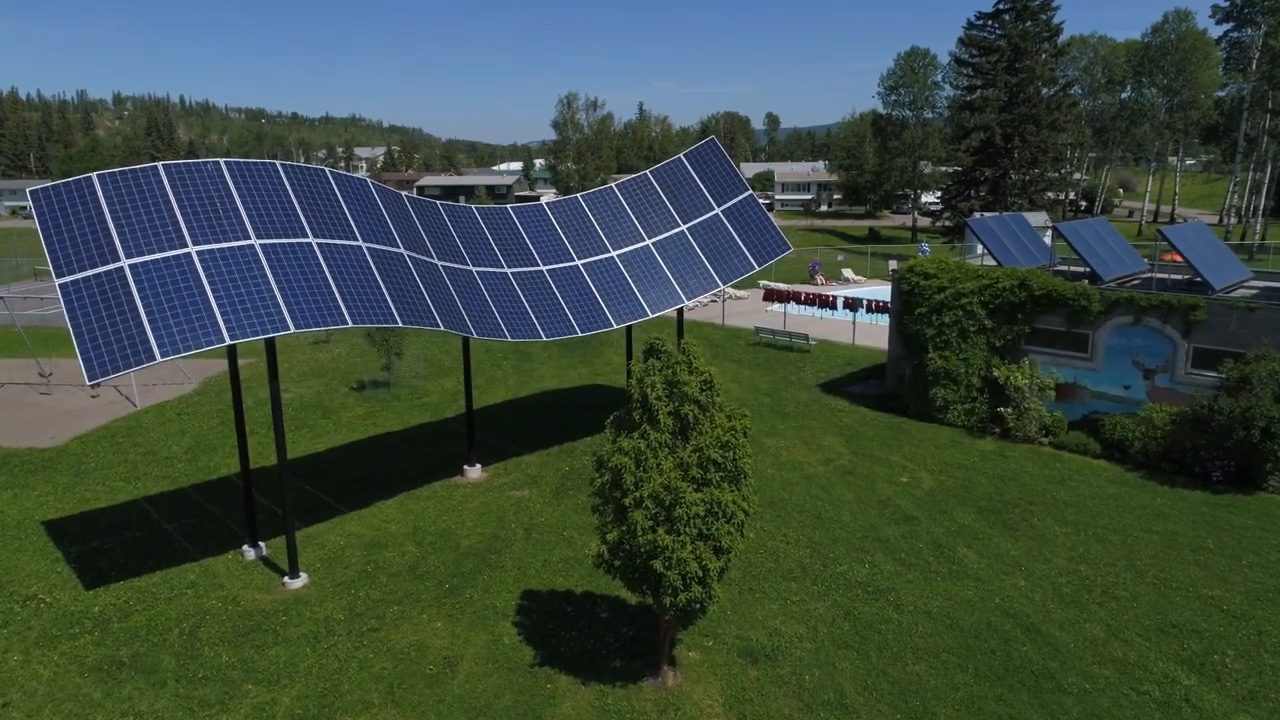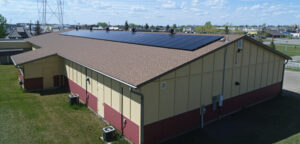
District of Hudson’s Hope benefitting from solar panels on municipal facilities
Case Study
Published: May 28, 2025
Updated: n/a
Relevant Topics: Policy, Transportation
Hudson’s Hope attracted nearly $1.3 million in grant funding to install solar panels on all of its large municipal facilities in 2018 and now saves approximately $63,000 per year on electricity costs.
How did they do it?
- Committed local champions at both the elected and staff levels driven to demonstrate leadership and reduce operating costs
- Political advocacy at the Union of BC Municipalities leading to Federal funding
- Regional planning, installation, and operational capacity in the Peace Energy Cooperative
All photos by Don Pettit for Peace Energy Cooperative.
Published: Sep. 4, 2025
Updated: n/a
Relevant Topics: Solar
Climate Zone: 7a
Context
Hudson’s Hope is a community of approximately 800 people located along the Peace River adjacent to two BC Hydro power-generating facilities: the Peace Canyon Dam and the WAC Bennett Dam. Prior to completion of Site C in 2025, they generated close to one-third of BC Hydro’s electricity. BC Hydro is also a major employer and economic contributor to Hudson’s Hope.
Beyond Hydro, communities in this region are familiar with multiple sources of renewable and non-renewable energy. It is the province’s primary oil and gas-producing region and is now also a significant contributor of power from wind, starting with the Bear Mountain wind park near Dawson Creek in 2009.
Hudson’s Hope is in Climate Zone 7a and experiences very cold winters and hot summers. In fact, annual temperatures can span 80 degrees and range between -40 and +40 degrees Celsius. It is also relatively sunny, with just over 2,000 hours of sunshine per year.

Contributors

Rob van Adrichem
Director of External Relations
Community Energy Association
Local Realities
Why Hudson’s Hope initiated its solar project
Like many northern, resource-based communities, Hudson’s Hope struggles to retain its tax base while providing amenities and services that residents enjoy and expect. For example, between 2006 and 2021, the population of Hudson’s Hope declined by 17% according to Statistics Canada. This requires the local government to literally do more with less, and highlights the importance of any realistic opportunity to save money and/or generate additional sources of revenue.

Journey to a Solution
Starting in 2016, Hudson’s Hope Mayor and Council advanced a community solar initiative to offset electricity costs and demonstrate leadership in sustainable energy. Together with the Peace Energy Cooperative (PEC), based in nearby Dawson Creek, the municipality selected nine sites that provided the optimal combination of roof size, southern orientation, and onsite electrical consumption. The solar installations at each site were designed within BC Hydro’s net metering policy to come as close as possible to meeting 100% of the electrical demands of those facilities and therefore provide the greatest financial return. The technical information and anticipated costs were provided by PEC in support of grant applications.
Through advocacy and collaboration with the Union of BC Municipalities, Hudson’s Hope secured $1.3 million in funding from the Federal Gas Tax Strategic Priorities Fund in 2017 and, following a public procurement process, contracted PEC and Moch Electric of Dawson Creek to design, supply, and install the solar arrays at all nine locations:
- District Office / Fire Hall
- Curling Club
- Arena
- Swimming Pool
- Public Works Yard
- Visitor Information Centre
- Museum
- Sewage Treatment Lagoons
- Beryl Prairie Fire Hall

Most of the installations occurred on the roofs of the buildings. There were two exceptions:
- A ground-mount solar array at the sewage lagoons to maximize the number of solar panels and their orientation to the sun
- A solar “wave” at the pool to serve as public art while generating power and providing more community visibility for the initiative
In all, 1,550 solar panels were installed, with a total capacity of 507 kW – the largest municipal solar project in BC. The solar installations at each of the facilities are “grid-tied,” meaning that each facility is connected to the BC Hydro power grid. When the solar panels make more electricity than is needed by the facility (such as during the summer), the excess power is sent to the grid. When the facility needs more power than what is being provided by the solar panels (such as during the winter), electricity is purchased from the grid.
Outcomes
1. Savings
The solar panels offset electricity costs for Hudson’s Hope by approximately $63,000 per year. This is a reduction of about 45% compared to when the municipality had no solar power generation. The cumulative statistics on solar production and cost savings has been displayed on the Municipality’s website.
The performance of each solar installation varies from facility to facility and ranges from 100% of electricity consumption at Bullhead curling rink, Public Works Yard, and Sewage Lagoons to 12% of annual electricity demand at the swimming pool.
2. Employment
The project contributed to local capacity-building through the hiring and training of seven local high school students who helped with the solar installation.
3. Leadership
The leadership of Hudson’s Hope was recognized by provincial organizations such as Community Energy Association and the Union of BC Municipalities, which both provided awards in 2018 to the Hudson’s Hope solar project. It was also featured on Alberta’s Green Energy Futures in 2018.
Contributors

Rob van Adrichem
Director of External Relations
Community Energy Association
Funding for this case study provided by:



Related Content
Fort St. John North Peace Museum is saving on energy to invest in programming
The North Peace Historical Society installed solar panels on the roof of the museum in Fort St. John as part of a strategic effort to reduce operating costs and channel the annual savings into additional local capacity in support of the organization’s mission.

